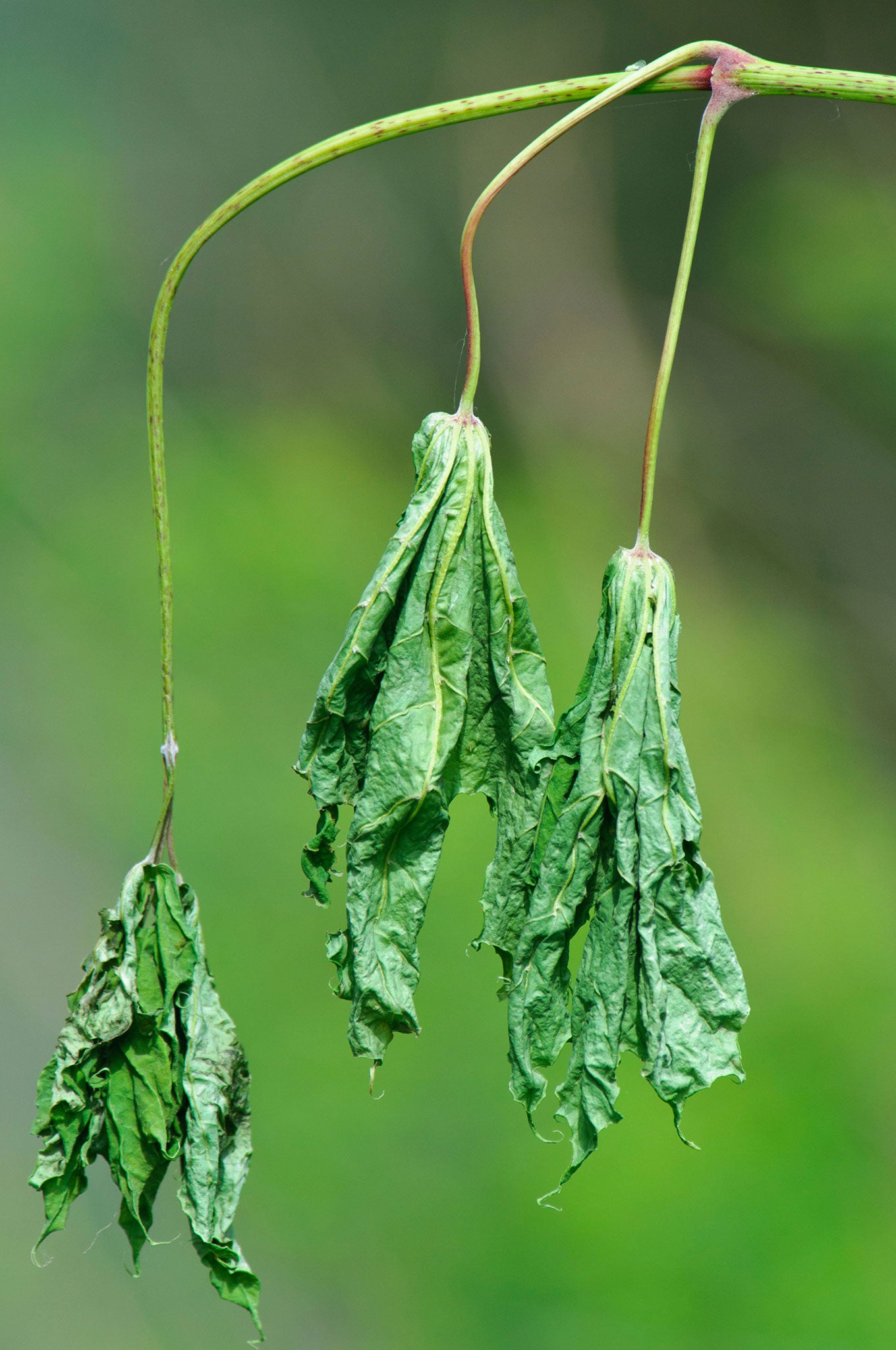Emma Townshend: How to bring back plants from the dead

I killed the olive tree. I moved its pot one frustrating day over the winter, when I knew that its roots had dug into the patio looking for water, and a big handful of suspiciously significant-looking growth came away in handfuls. And then it was dead. Yep, actual death.
It's easy enough to do, especially at this time of year. A common technique is to leave your plants in the vicinity of the British Isles, assume that this is a Very Rainy Place, and that you don't need to hassle a neighbour to actually water them. And then, immediately, as a direct result, a heatwave ensues.
However, what looks dead is not always dead. So this is a little motivational talk about stopping before you dig that "dead" plant straight out and chuck it away. Fair enough, if it's your prize window boxes and your mother-in-law is due any minute. There, I can see the argument for new planting on the spot. But lots of first-time gardeners assume that once the leaves have fallen off, the plant is properly, unrevivably dead. Which is often far from the truth.
Plants, it turns out, have all kinds of zombie-ish habits that work in their favour. To start with, most plants will lose their leaves when stressed about water. There's not much point having leaves to photosynthesise if you haven't got any water, one of the essential chemical raw materials for the engine of plant life. So the first thing is to restore the supply.
Just watering plants with the hose might help, but it's better to soak them. Small pots should sit submerged in buckets or the sink for a couple of hours. If you can bear cleaning the bathroom afterwards, big pot plants can have a filled cold bath for an hour or two to great benefit. And the apparently dead denizens of garden borders should be heavily watered, with the hosepipe left on for 10 minutes or so, aimed directly at their roots.
Second, keep up the watering for a week or two. Make it regular after that first soak, and ensure that the soil is really properly wet through each time. So much watering is just a quick wetting of the top 2cm of soil, which doesn't really help anyone, although of course it does make everything smell nice.
With shrubby plants – those that have hard, woody stems – you can cut an unimportant side branch to see whether there is green growth inside, indicating that the plant still has life in it. With softer growers such as geraniums or fuchsias, look for new sprouting leaves within a fortnight or so.
Help the guys along with a liquid feed, perhaps an organic seaweed mixture such as Vitax (£5.99 from Amazon). Minerals are an essential part of the rejuvenation process, and water-stressed plants are much more prone to disease, so it's a good idea to keep a close look-out for predators, pests and creeping fungus infections, delicious as those all sound.
Though obviously, if you were secretly relishing the idea of filling the new gap with something different, you've no need to take any of this advice. I was slightly feeling that way about the olive tree. "Hurrah!" my evil little brain thought, "Now I never have to get twigged by that stupid spiky tree ever again." But not surprisingly, I suppose, given the conditions that olive trees survive in mountainous Italy, mine has just started to resprout. Little grey-green leaves are bursting out of the trunk and branches.
Tough love time. The olive tree is not coming back in my garden, but it's now on Freecycle for someone else to take away and love. Or possibly kill. But at least this time it won't be my fault.
First aid plant therapy
Turf
No matter how dry and yellow, start with watering. Most grass will re-green within 10 days. Don't start expensive reseeding till you've tried hosepipe power.
Roses
Roses can go into weeks and weeks of suspended animation then start resprouting. If there's still any green at all, don't chuck your rose, just keep watering.
Fruit trees
First they drop their fruit, then their leaves, and you will lose a year's crop if so. But flood them with water and you should get new leaves for the late summer.
Stop the drop
Constant watering is the best technique. I know I say this every year, but buy an automatic watering system: Hozelock's 20-plant kit is £54.98 from Amazon.
Join our commenting forum
Join thought-provoking conversations, follow other Independent readers and see their replies
Comments